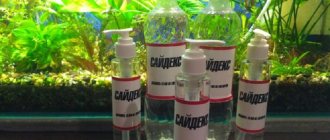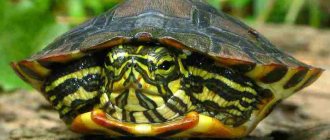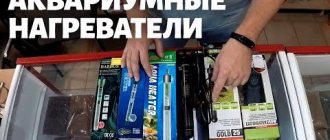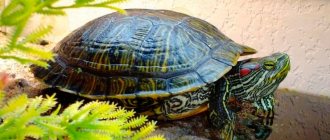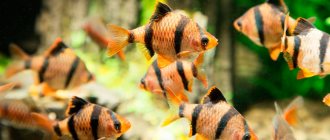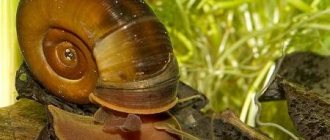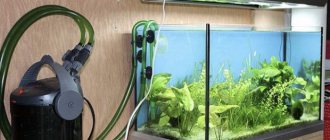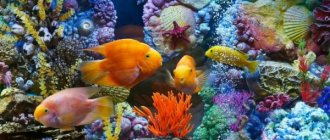Construction of terrariums
The terrarium is a transparent structure for keeping heat-loving amphibians and reptiles that cannot live in ordinary apartments. In terrariums, the most suitable conditions are created for these animals: they maintain a sufficiently high temperature, the required level of humidity, and maintain lighting conditions, thanks to which these animals feel good away from their natural habitat. In addition, the terrarium not only serves as housing for cold-blooded animals, but also represents a decorative element that can decorate any interior.
Where is the best place to keep it?
There are several opinions regarding where and how to keep these reptiles. Some are inclined to believe that small individuals are best kept free, i.e. on free grazing. This position takes place, because in theory, the reptile moves around the house without any restrictions, choosing the most comfortable place for itself. In addition, it is not affected by a number of negative factors that are typical when being in closed spaces.
But upon closer analysis, this version of the content has more negative aspects than positive ones:
- Reptiles will not receive optimal humidity levels in an open environment. They will also lack light and comfortable temperature.
- In an apartment, it will be exposed to drafts and dust. There is also a high chance of injury.
- Reptiles dig soil in their usual habitats. It is clear that this cannot be realized in an apartment.
Another point is that reptiles are accustomed to gnawing on shells, limestone, i.e. something hard. In the apartment they will do the same thing, i.e. your household items will be at risk. And this will be of little benefit to the turtle itself.
Having analyzed all the pros and cons, it becomes obvious that the most optimal solution would be a separate terrarium for a land turtle.
Types of terrariums
There are several types of terrariums, which are distinguished by purpose, internal structure and placement. The terrarium should be selected and equipped depending on the characteristics of the animal species that is supposed to be kept in it. Based on their shape, terrariums are divided into horizontal, vertical and cubic. Horizontal terrariums are intended mainly for animals that naturally live in open spaces - in steppes, deserts, as well as for recreation.
birds that lead an amphibious lifestyle.
Vertical terrariums are more suitable for animals living in trees or mountain slopes, while cubic ones can contain reptiles of both types, as well as those that naturally live in the depths of the earth. The size of the terrarium depends on the number of animals contained in it and their size.
For small animals, such as turtles, lizards and frogs, a relatively small terrarium is sufficient, but for large animals, such as crocodiles or snakes, a fairly spacious room will be required. The terrarium should be selected so that the animals in it can move quite freely; ideally, its size should be 3–5 times the size of the animal. If reptiles or amphibians are kept in groups of several individuals, then the size of the terrarium should accordingly be larger.
Water
To successfully keep a red-eared turtle, the water temperature should not fall below +20 ºC, the most optimal parameter is +22+28 ºC.
The turtle spends almost all its time in water, so care should be taken to ensure that the water is clean. Animals sleep, eat and defecate directly in the water, so it needs to be changed frequently. A filter must be installed in the aquarium.
In a dirty aquatic environment, pathogenic microorganisms develop that cause various infectious diseases of turtles, which are then difficult to cure.
The water level in the aquaterrarium should be higher than the size of the turtle's shell. This is done so that an animal that accidentally ends up on its back can easily roll over on its own.
Normal development of red-eared turtles is possible only if good conditions are created for them. The turtle becomes a beloved pet, so you need to take care of it accordingly.
Terrarium Dimensions
The shape of terrariums is also different and depends on what animals are kept in them. According to their form they can be divided into:
Horizontal
- a terrarium, the length of which is 2 or more times greater than its height, and the width is approximately 1.5 times greater than its height. Designed for keeping terrestrial animals that do not climb trees or vertical surfaces: many snakes and lizards, toads, land turtles and many other animals.
Vertical
- a terrarium, the height of which is 2 or more times greater than its length, and the width can be approximately equal to the length. In such a terrarium, strong tree branches or driftwood, vines are installed, and the back wall is sometimes decorated with bark, cork, stone or ceramic tiles, which allows animals to climb. Used to keep animals such as chameleons, many geckos, green iguanas, tree snakes, tree frogs and other tree frogs.
Cubic
- intermediate type. The length, width and height of such a terrarium are approximately equal. Used for keeping animals that equally use both vertical and horizontal surfaces. By creating a thick layer of soil in a cubic terrarium, it can be used to contain burrowing species (for example, spadefoots and some skinks).
Spherical, round, conical
- mainly used as a decorative part of rooms with various moisture-loving plants (moss, fern, etc.) planted in such terrariums.
How to make a turtle house with your own hands
If you want to make a temporary or permanent habitat for a turtle, it’s not a problem at all
It is important to have the skill to work with tools and the desire to create a beautiful and cozy house for a reptile. We offer you two options - temporary from cardboard or permanent from moisture-resistant plywood
Temporary housing
If you have not had time to prepare for the appearance of a turtle in your home, then take a large box made of thick cardboard (the height of the walls should be at least 30 centimeters). Using a clothespin or other device, attach a lamp with a 30 W bulb to the box or place a table lamp nearby.
You can put an isolon mat or several layers of warm coating on the bottom. The finished house, temporary housing for the turtle, should be placed higher - drafts and hypothermia are possible on the floor.
Plywood terrarium
To create a high-quality house for a turtle from moisture-resistant plywood, make a clear and competent sketch. We recommend focusing on a box whose height is 25-30 centimeters. In this case, the optimal width and length parameters will be 80x50 cm. Prepare five parts:
- The bottom is 80x50 centimeters - one piece.
- The back and front walls are 80x25 centimeters - one piece is made of glass and one of plywood.
- Side walls 43x25 centimeters - two pieces.
All workpieces must have machined, smooth edges. Place the lower part of the terrarium (bottom) on the work surface (table). We carefully glue the side walls to it with universal glue. The next step is to add the last wooden piece to the structure and fix it with glue. At this point, you should definitely check the reliability of the connection. Instead of universal glue, you can use liquid nail sealant or self-tapping screws.
In order for the structure to last for a long time, it must be fixed with corners and screws. To prevent the reptile from being injured by protruding metal parts, they must be decorated.
Having assembled and secured the three parts of the homemade terrarium, we supplement the glue box with a glass panel.
After completing the assembly of the product, it must be checked for any cracks or holes. A day later, when the glue has dried, you can begin sealing the connections - use aquarium silicone glue. If this is not done, dirt will get into the cracks and the structure will not last long.
You need to attach legs to your homemade terrarium. They can be made from scrap materials - screws and bottle caps. To prevent the plywood from moving, install five legs.
Now you can decorate your home with lamps, flooring and a lid - the home for the land turtle is ready!
Equipment and climate control
Scenery
Of no small importance is the decoration of terrariums, bringing them closer to the natural views of a particular climate - corresponding to the natural ecosystem of the animals kept at home. Using decorated foam plastic, natural stones, bentonite, tree bark and other materials, micro-landscapes of a desert or forest, mountain range or plain, etc. are recreated.
Priming
Various artificial and natural materials are used for the soil of the terrarium: stone, sand, expanded clay, earthen mixtures, etc. - depending on the ecosystem of the terrarium and the animals kept in artificial conditions.
Plants
Depending on the type of terrarium, they are planted with live or artificial ornamental plants, made mainly of plastic that is neutral to various environments.
Landscaping with living plants when recreating a natural landscape
Temperature
A necessary condition for the normal functioning of poikilothermic animals is a certain environmental temperature. Preferred temperature varies among different animal species.
There are two conventional sections in the terrarium:
- A warm corner
(English hot spot), in which heating elements will be placed and where animals will increase their body temperature. The temperature in this area is higher than in the rest of the terrarium. - Cold corner
, in which the temperature is lower and the humidity is usually higher than in a warm corner.
The presence of two areas with different temperatures and humidity (as well as an intermediate zone) allows animals to choose the necessary environmental parameters themselves.
The terrarium can be heated using:
- Thermal cords, which can be located both inside and outside the terrarium
- Thermostones
- Thermomats - flat heating elements
- Ceramic heat emitters
- Infrared lamps
- Incandescent and mirror lamps that combine heating and lighting functions
A thermometer is a necessary element of a terrarium, with the help of which temperature is monitored. It is necessary to install thermometers in the warm and cold corners of the terrarium. You can also use a thermometer combined with a hygrometer in a cold corner. A water thermometer is required in an aquaterrarium.[3]
Humidity
Another important factor, especially for amphibians, is humidity.
To maintain a certain humidity, the following are used:
- Sprayers, or sprayers, from which the soil, plants and walls of the terrarium are periodically sprayed
- Rain installations
- Fog generators
- Pump fountains
To measure air humidity, hygrometers or thermometers combined with a hygrometer are used.[3]
Lighting
Lighting for the terrarium is provided by incandescent lamps and/or LED and fluorescent lamps. Mirror reflector lamps with a power of 40 to 75 W provide local heating of a certain area of the terrarium, thereby creating hot and cold zones in the terrarium so that the reptiles can independently regulate their temperature by moving between these zones. To simultaneously illuminate and heat terrariums with nocturnal animals, you can use infrared lamps or simple incandescent lamps with a red or blue bulb, since red or blue light does not bother the animals.[3]
Ultraviolet irradiation
To produce vitamin D, regulate mineral metabolism, stimulate normal behavior and reproduce, many terrarium animals require ultraviolet radiation.
Most reptiles and many amphibians require UV fluorescent lamps. Most lamps designed specifically for terrarium animals have a certain amount of ultraviolet in the spectrum. They are designed for constant illumination and irradiation of the terrarium. Based on their spectrum, such lamps can be divided into three groups:
- Lamps whose spectrum contains little hard UVB (2%). Designed for soft irradiation of amphibians, snakes and nocturnal lizards, as well as illumination of terrariums in combination with other lamps.
- Lamps in the spectrum of which the share of UVB is 4-5%. Designed for reptiles with a moderate need for ultraviolet radiation: from tropical rainforests and temperate latitudes.
- Lamps in the spectrum of which the share of UVB is 7-10%. They are intended for reptiles of arid zones (steppes and deserts), which have a high need for ultraviolet irradiation.
Erythema and quartz medical lamps can be used for session irradiation of animals.[3]
Ventilation
The terrariums are provided with ventilation holes and slits, draped with a fine mesh of metal and plastic, for the entry and circulation of fresh air.
Rules for caring for an aquarium
The owner needs to organize proper care of the aquaterrarium, because the quality and lifespan of the domestic reptile depends on this.
Rules of care:
- Partial/full water change. Do not fill the tank with tap water. To keep reptiles you need clean, settled or filtered water.
- General cleaning, including washing glass, various accessories and appliances placed in the tank.
- Replacement and cleaning of soil.
It is also necessary to control the operation of filters, lighting devices and other devices that ensure a normal microclimate in the aquaterrarium for the healthy and comfortable life of the turtle.
Species terrarium
The most suitable habitat for most amphibians and aquatic turtles is an aquaterrarium - a structure that combines the features of an aquarium and a terrarium. Aquatic and semi-aquatic plants can be planted in them. Typically, most of such a terrarium is occupied by a pond, and an island is arranged in the remaining space. Small pebbles are placed at the bottom of the reservoir, and sand is most often used as soil to recreate land. Species terrariums are premises for keeping representatives of a single species or closely related species.
Species terrariums are good because they can create the most suitable conditions for animals, since their maintenance requirements are similar. In addition, some animals should not be kept with other species of the same genus, as they may behave aggressively towards each other. Terrariums for each animal species have their own characteristics.
For amphibians, the design of terrariums is basically the same, with the exception of some details. Thus, for breeding amphibians, you should choose terrariums with a height of about 50 cm. Newts and frogs are best kept in aquaterrariums or in terrariums with a pond; tree frogs, tree frogs and toads will benefit from a terrarium with a small pool about 3 cm deep. Reptile terrariums should be planted with a sufficient number of plants, preferably with large leaves. On average, the air temperature for amphibians should be 22–24 °C, and for tropical species – 23–26 °C.
Since overheating is very harmful for amphibians, it is best to place heating devices from below and carefully monitor the temperature level. Ventilation is recommended not to be too intense. In terrariums intended for keeping tropical tree frogs, it is necessary to plant plants of the bromeliad family. Salamanders, unlike most other amphibians, do not need large bodies of water; a small bath is enough for them. In a terrarium with salamanders, it is necessary to place several shelters made of stones or driftwood. In terrariums for desert lizards, sand should be used as soil and stones should be placed under the heater. The temperature of the sand should be no lower than 28 °C, and the temperature of the stones should not be lower than 35 °C.
Making tarrium
To make a terrarium you will need: building material, which will become the basis of the structure; sealant for aquariums, which allows you to glue the component parts together, as well as fill the seams to prevent water from leaking; special devices and tools: electric heaters, sensors, lamps, glass cutter, screwdriver, saw, drill, vice. For example, consider making a glass terrarium at home.
First you need to decide on the volume of the frame and the size of the roof. Now, using a glass cutter, you need to cut out the necessary sheets. The cover of the product should be equipped with holes for lamps, as seen in the photo. Container for a terrarium To make the seams even, you can stick tape along the edges of the glass. Glass should be degreased using acetone.
We fill the so-called seam with silicone sealant, the excess of which is removed along with the tape. A vice is used to fix the desired position of the structure until the sealant has completely dried. Remove matches. Then you need to attach the hinges on which to install the doors. It is also advisable to install a locking mechanism. It can be a small lock or latch.
Conditions for keeping the red-eared turtle
The red-eared turtle critically needs only water and a beach with recommended temperature parameters, and a balanced diet. For the proper development of the skeleton and shell, the animal needs calcium. Vitamin D3 is required for calcium absorption.
Sources of vitamins for the predatory red-eared turtle - food and ultraviolet light (for D3)
Therefore, it is important to imitate natural food diversity and sunlight. The turtle is omnivorous. Under the age of 2–3 they prefer meat foods
After puberty (4 years), 30–50% of the diet consists of plant food
At the age of 2-3 they prefer meat food. After puberty (4 years), 30–50% of the diet consists of plant food.
- Meat, except pork and lamb (excessively fatty). Heart, liver weekly (vitamin A). Under natural conditions they successfully hunt rodents and birds.
- Grasshoppers, locusts, cockroaches without legs (the legs have spines). Earthworms, land snails.
- Aquarium snails are useful. Chewing on shells limits unwanted beak growth.
- Sea fish (river fish is dangerous with parasites) with small bones. Do not remove the entrails; they contain vitamin A. Fatty species (capelin, mackerel) are pre-soaked. Crab meat, mussels, unpeeled shrimp. Aquarium animals of suitable sizes.
- Aquarium plants, except Elodea. Indoor plants: cacti and agave with spines removed, tradescantia, hibiscus, tradescantia.
- Non-poisonous herbs, beet and carrot tops, nettles. Dried for the winter.
- Oatmeal (Hercules). Vegetables, fruits, berries. Sunflower seeds, pumpkin seeds.
If your red-eared slider is chewing on a cuttlefish bone placed in a jar (sepia, sold in pet stores), there is not enough calcium in the diet. Adjust the menu in favor of small fish and insects. Add limestone stone to the soil. Add calcium gluconate (available in pharmacies) to your food. Check if the UV light is sufficient. Pet stores offer mineral and vitamin supplements for turtles. Lack of calcium causes rickets in animals.
Feed turtles up to one year old once a day. Gradually reduce the frequency of feeding by introducing a weekly fasting day. Three-year-old individuals need to eat 2-3 times a week.
Caring for your pet consists of cleaning algae from the shell and trimming its claws. The shell is part of a living organism, it is renewed, sensitive, and has nerve endings. Hard brushes, especially chemicals, are unacceptable for cleaning. Patience and a soft sponge will help
Trim the nails carefully, do not damage the blood vessels. Do not use regular scissors. There is a special tool in stores
There is a special tool in stores.
